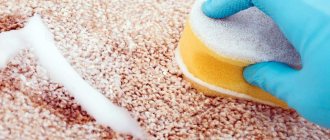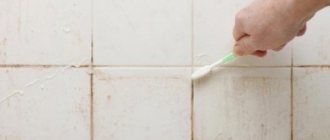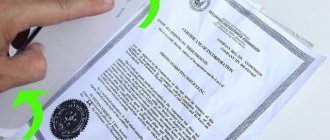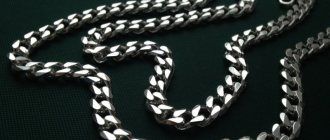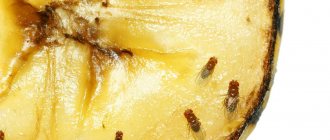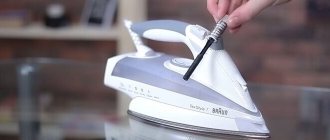Few people know how and with what to remove soot and soot from plastic windows.
Cinder contains resins and fatty impurities, so it is quite difficult to clean plastic of this without leaving a trace. Soot is a product of combustion of various materials. It is also called soot, it is quite light and can easily penetrate various cracks in the house and small corners. If you start cleaning by smearing the dirt with a wet cloth, the stains may remain forever.
Because of this, the soot will become a greasy mass that will clog into all the microcracks and then it will be very difficult or even impossible to wash it off. After reading this article, you will learn how to remove soot and soot from plastic windows.
Laundry soap
Regular laundry soap perfectly whitens window slopes. To do this, it will be enough to take a bar of 72% soap and grate it on a fine grater. The crushed bar should be filled with hot water to about ⅓, and then mixed thoroughly and left until dissolved.
The resulting mass will be viscous and thick. It is recommended to apply it in a thick layer on the slopes (or individual yellowed areas of windows) and leave for 15-20 minutes. Then wipe off the dirt with a regular sponge or microfiber cloth - the slopes will immediately become whiter.
laundry soap
How to clean plastic windows from dirt
Plastic windows have replaced wooden ones and have become a part of people's lives. They have many advantages and one of them is easy maintenance. However, various types of contamination also occur on plastic frames. It depends on their type how to clean plastic windows.
Most read
- In the Gantsevichi district, a car flew into a ditch 09/21/2021 (2,307)
- Pellet plant in Gantsevichi: who profits, and who... 09/16/2021 (1,993)
- What kind of work is there in Gantsevichi district: vacancies September 18.09.2021 (1,936)
- A video has appeared of how the Day was celebrated in Gantsevichi... 09/18/2021 (1,887)
- Heating is turned on in Gantsevichi, but not for everyone yet 09/20/2021 (1,574)
- Are you worried about the monotonous hum, dust and smoke from... 09/19/2021 (1,170)
- Forester from Gantsevichi district with 20 years of experience... 09/22/2021 (1,152)
- Dresses, blouses, stylish bags and backpacks:... 09/19/2021 (1,062)
- Agricultural enterprises of the Gantsevichi district have replenished... 09/20/2021 (940)
- In Gantsevichi, utility workers are eliminating a serious... 09/16/2021 (841)
- Why can’t you go to the stadium in Gantsevichi from... 09/17/2021 (794)
- Hooray! In Gantsevichi, heating should be installed in houses today 09/21/2021 (692)
- We gathered in Bereza for National Unity Day... 09/20/2021 (683)
- What place does the Gantsevichi District Executive Committee occupy in... 09/16/2021 (656)
- Simple and clear: a health worker at the Gantsevichi Hospital... 09/23/2021 (632)
- The remains of the pilots who died in... 09.16.2021 (607) will be buried in Gantsevichi
- Latest issue: Ghanaians are being sold... 09.22.2021 (498)
- Who entered the TOP 15 organizations in terms of quality of service... 09/20/2021 (464)
- Take part in the popular vote - “My... 09/23/2021 (389)
- In Belarus, due to COVID-19, they stopped... 09.22.2021 (367)
Soda
Baking soda is considered one of the most versatile kitchen cleaners. Of course, it is not suitable for glossy surfaces, since there is a risk of minor scratches, but it copes with windows with a bang.
To whiten slopes, it is enough to dilute baking soda with water in a ratio of 3:1. After dilution, you should get a mass with the thickness of sour cream. It must be applied to the slopes and left for a couple of minutes. Then use a sponge or rag to wash off the soda using lightly rubbing movements.
Removing aggressive stains
Often, after repairs, aggressive marks remain on PVC windows, which cannot always be removed with store and home remedies. They can also be removed at home.
Scotch tape marks
After removing the tape, sticky marks remain on the plastic. They cannot be removed with a dry cloth. Folk remedies will help here:
- Glue a piece of fresh tape onto the remaining mark and tear it off with a sharp jerk. The process continues until a positive result is achieved;
- Lubricate the sticky spot with any vegetable oil. After 10 minutes, the dirt is wiped off with a paper napkin;
- the sticky trace is erased with cotton wool or gauze soaked in ammonia or ordinary alcohol.
Dentifrice
Tooth powder for whitening window slopes was used back in the USSR, but even now this method has not lost its relevance. The powder contains various components, which lead to whitening and cleaning of the surface.
The powder should be diluted a little with water, and then spread in a thin layer over the slopes and wait until the composition dries completely. Next, the mass is removed with a damp cloth or rag. By the way, to increase friction, many people add crumbled school chalk to the paste.
dentifrice
How to wash windows after renovation
Plastic and wooden windows in a new building with finishing or in your own home after renovation need high-quality cleaning from contamination with construction dust and working compounds. Let's take a closer look at how to clean windows after repairs and what procedure is recommended to follow.
Preventive measures
Contaminants stick firmly to plastic surfaces and mirror-smooth glass units, especially if we are talking about traces of mounting adhesive and stains from primer. To ensure that window structures are damaged as little as possible, they should be protected before starting work.
Glass surfaces and frames are covered with stretch film, which adheres well without leaving gaps. Each frame is covered with film separately so that the window can be opened during repairs.
If regular film is used, it is glued using tape - regular or masking tape. Upon completion of the repair, immediately remove the tape, otherwise it will later leave sticky marks on the frames or glass.
Hydrogen peroxide
This product has long been famous for its whitening properties. Most often, 3% peroxide is used - it is safe for children and animals. It is best to distribute peroxide onto slopes using a spray bottle, but on especially dark or yellowed areas the composition can be poured locally, from a bottle. The liquid should be left on the slopes for 2-3 minutes, and then wiped off with a napkin or paper towel. For a more noticeable effect, if the yellowness is strong, you should bleach the slopes with peroxide in combination with soda (mix to the consistency of a liquid slurry).
Recommendations for caring for PVC frames
To wash PVC frames, use almost the same products as for window sills, since the material being cleaned is homogeneous. If, after renovating an apartment, you have to wash the frames of newly installed windows, you must remove the protective film. Over time, it will stick and it will be difficult to remove it. After this, ordinary dirt is washed off with water with the addition of laundry soap, dishwashing liquid or washing powder. It is important that any composition does not contain acids or abrasives. Even new frames may show minor scratches. They can be easily hidden by treating the area with polish.
Store-bought care products for PVC frames
You can clean the PVC frame with the same “Mr. Proper" or similar products used for window sills. However, this list can be expanded a little:
- Domestos gel, specially developed for toilets and baths, can whiten yellowed frames;
- The basis of Pemolux cream is soda. It is safe for PVC surfaces and can easily clean stubborn dirt after repair;
- It is good to wash off grease from kitchen frames with Comet gel. When used, it is diluted at the rate of 60 ml of the drug per 5 liters of water;
- Mr Muscle cream will help whiten frames. The preparation is rubbed onto the PVC surface and washed off with a wet sponge after 3 minutes.
When using any chemical, you must remember safety precautions and use personal protective equipment.
Folk remedies for caring for PVC frames
You can clean PVC frames at home, as well as window sills, using folk remedies. Let's look at the two most popular recipes:
- Equal proportions of chalk and tooth powder are diluted with water to form a paste. This mixture is applied to a dirty surface and after drying, simply wiped with a dry soft cloth.
- To remove a stubborn stain, sprinkle it with baking soda and immediately rub it with a sponge soaked in vinegar. The reaction that occurs will clear out the dirt, after which the frame must be washed with clean water.
When using an unfamiliar folk remedy, you must first test it on a small area and then rub it on the entire frame.
Washing powder
Any washing powder works well for whitening windows. It's not just the chemical composition of the product, but also the many abrasive particles. However, it is better not to use a lot of powder, otherwise, due to the abundance of foam, unsightly stains and a specific smell may remain on the slopes. It is best to use gentle powders (for example, for baby clothes or hypoallergenic) that claim to be whitening.
Preparing to wash plastic windows - what will you need?
It is necessary to prepare for such an important procedure carefully by purchasing the missing cleaning products and tools in advance at the store. In most cases, to wash plastic windows you need special products, and not universal ones for furniture or kitchens.
Useful list:
- If your windows are not heavily soiled or stained and just need to be refreshed, you can use regular washing powder or liquid detergent . You can also use a soda solution, 2 tablespoons per liter of warm water.
- Domestos gel will be needed if there are stubborn yellow stains on the frames and window sills, as well as if there are mold stains.
- Surface cleaning creams “Pemolux” or “Mr Muscle” are useful if there are visible stains on the windowsill or frames of plastic windows that are difficult to clean - for example, traces of rust, stains caused by black rubber, marks from flower pots, stains of grease or limescale.
- Surface cleaner “Mr. Proper" is the best assistant in the fight against greasy deposits on the windowsill, dark marks around the handles, dirty stains and soot stains.
- Glass cleaner - any of your choice.
We talked about the best cleaning products - but, if necessary, they can be replaced with your favorite and cheaper analogues.
Read labels carefully before use - products must be suitable for cleaning plastic!
Types of pollution
It is known that plastic windows do not require constant maintenance. It is enough to wipe them with a clean sponge 1-2 times a week to remove dust. Naturally, this applies to cases where the house is located far from chemical plants and mines.
In any case, the plastic window sill should be washed once a week using gel or dishwashing powder. This product is diluted in warm water, a sponge is moistened in the liquid and the window sill is wiped, and then the plastic surface is wiped dry.
If the window is subject to serious contamination, you will have to use special strong means. Most often this applies to window sills located in the kitchen next to the stove or in a room where renovations are underway.
In general, plastic window sills suffer from the following contamination:
- dust;
- various spots;
- polyurethane foam;
- glue;
- duct tape;
- primer or putty.
Cleaning products
If you need to wash the window sill of a plastic window, then you need to start by purchasing all kinds of cleaning products. There don't have to be very many of them. You just need to go to the nearest household store and choose the right product that will help you effectively clean the surface.
Now let's move on to the next question - how to clean stains from a plastic window sill?
In fact, there are many more such funds. Among the most popular are also: “Pemolux” and “Cosmofen 10”.
How to bleach yellowed plastic - 10 ways
Plastic has long become one of the most popular materials for the manufacture of various things. It is found in toys, electronics, home appliances, cars and home decor. But over time, any white plastic products begin to acquire yellow tints. The reason for this is exposure to sunlight, sudden changes in temperature, improper care and natural reactions with oxygen. In such situations, you can try to bleach the yellowed plastic to restore it to its former beauty.
Related article: Plastic windows with outward opening
Washing double glazed windows
Cleaning a double-glazed window from dirt is not so difficult. And using a professional tool from the arsenal of cleaning companies, you can handle it in a couple of minutes.
First, prepare a foam solution, for example, with dishwashing gel. Dip a non-abrasive sponge in it, squeeze out so that the water does not run off, and wipe the surface of the glass unit with horizontal movements. If you use store-bought household chemicals, apply the product to the glass with a spray bottle and also rub it with a sponge on the glass using horizontal movements. Pay special attention to the area along the glass unit where most of the dirt accumulates.
Now use a tie rod (also called a scraper). Place it firmly on the glass and drive off the water using vertical movements. Thanks to the rubber nozzle, the tool will handle this quickly and without streaks. After each pass of the screed on the glass, wipe its working surface with a dry cloth - this way you will get the perfect result. Make each new pass of the screed overlap with the previous one. Finally, after the glass surface is completely clean, use a cloth to wipe the bottom of the frame to remove any stains and move on to the next surface. After you wash all the glass, you only need to wipe the window sill.
Now that you know what and how to clean plastic windows from dirt and yellowness, it will not seem so laborious and tedious. And the result will delight you for another six months.
How to bleach plastic
It is not so difficult to return plastic products to their original appearance. This can be done at home without outside help. You just need to stock up on all the necessary means that will be used to achieve the goal. There are several cleaning methods.
Useful video on bleaching plastic - video:
Laundry soap
A simple but very effective remedy. Laundry soap will help renew old plastic, giving it a white tint again. This method shows maximum effectiveness when color changes are caused by exposure to fatty deposits.
- Grate laundry soap (½ bar).
- Pour warm water (150 ml) and stir.
- Apply the prepared solution to the problem area. Wait 30 minutes.
- Wipe with a clean sponge, wash away soap marks with clean water.
You can use this method in any case, because soap is harmless.
Special napkins
Electronics stores sell special wipes. They contain various substances that can clean computer equipment of dirt without any harm. They also help with yellowing.
- Every 6 hours, wipe the yellow mark with a napkin.
- Repeat daily for several days until the yellowness disappears completely.
This option is ideal for household appliances and plastic window sills.
Tooth powder with chalk
This unusual mixture allows you to return the white color to things if shades of yellow have appeared recently. You can try it for old stains, but you are unlikely to achieve significant results.
What do we have to do:
- Mix a small amount of chalk and tooth powder.
- Add water to make a thick paste.
- Spread over the entire surface of the plastic and wait until dry.
- Remove any remaining powder with a dry cloth.
The procedure can be repeated many times.
Soda and washing powder
Baking soda is very often used to clean dirty stains from various things. It also copes well with yellowness.
How to use it:
- Mix soda (1 tbsp), washing powder (1 tbsp) and water (500 ml).
- Apply liquid to plastic object. Wait 8 hours.
- Wash off all traces with a damp cloth.
An excellent option for cleaning window sills.
Vinegar
An equally effective way to restore the whiteness of plastic products is acetic acid. To do this you will need a 70% solution.
- Soak a soft cloth or large cotton pad in vinegar.
- Wipe down the plastic.
- Wash the surface of the object with water.
When using acid, wear rubber gloves and ventilate the area. It is also not recommended to use the yellow remover on sensitive plastic.
Citric acid with chlorine
A powerful yellowing agent that can be used on thin plastic products without worrying about their integrity.
- Mix equal amounts of citric acid and chlorine.
- Apply to stains. Wait 30 minutes.
- Remove any remaining product.
This mixture can be used repeatedly until you can return the yellowed plastic to its usual appearance.
Hydrogen peroxide
This medical product is very popular and is present in every first aid kit. It helps not only to disinfect wounds, but also to tidy up the surface of yellowed plastic.
- Wet a soft sponge with peroxide.
- Rub yellow stains repeatedly.
- Wash off any remaining traces of peroxide.
The product does not harm plastic. Therefore, long-term and repeated use is allowed until the desired result is obtained.
Alcohol
Alcohol has become very popular in cleaning stains. It destroys the composition of any dirt, making things clean again. It helps to whiten heavily yellowed plastic no less effectively. Its composition not only removes yellowness, but literally destroys the structure of the upper layers of the object. Therefore, it should be used with caution.
How to use alcohol:
- Soak a rag in it.
- Wipe the yellow parts of the surface.
- Remove all traces of alcohol with clean water.
This method is suitable for rough, dense plastic on household appliances and various devices.
Acetone
Another very aggressive solvent that can not only lighten the plastic, but also damage it. Before use, it is recommended to apply a small amount of acetone to an inconspicuous area of the item to check the reaction. If everything is in order, then it can be used. Nevertheless, caution will still not be superfluous.
- Soak a thick cotton pad with acetone.
- Wipe down the plastic.
- Wipe off any traces of product with a damp cloth.
Instead of acetone, you can use nail polish remover. Its composition is not so harmful to the coating, but shows less effectiveness.
Special products for plastic restoration
You can return white plastic objects to their original appearance using special products that are designed to restore plastic in cars. You can buy them at auto repair shops and spare parts stores.
- Apply to the problem area following the instructions.
- Wait until dry.
Before use, be sure to read the instructions.
Bleach
Option for small items. It involves completely soaking the item in chlorine.
How to do it:
- Dilute bleach or bleach (1 tbsp) in water (1 l), adding a little soda (1 tbsp).
- Place the item to be restored into a container with liquid. Leave overnight.
- Remove and rinse the item thoroughly under cool water.
If the yellowing is very strong, soaking in pure bleach without diluting it with water is allowed.
Washing process step by step
Depending on where the contaminants need to be removed from (glass, plastic), the sequence of actions and the set of cleaning agents, as well as materials (magnetic brush, cloth, sponge) will differ.
In any case, the first step is to clear the window sill and the window opening itself from unnecessary objects.
Cleaning plastic
The sequence of actions may be as follows:
- the plugs are pre-removed;
- before applying a special detergent, wipe the entire surface with a damp cloth, this will remove dust;
- the window sill and profile are coated with a cleaning compound; it is recommended to leave it for a few minutes;
- use a sponge to remove excess product;
- using a rubber spatula you can clean the corner joints;
- If the stains are removed, the cleaning solution is washed off with clean water.
In special cases, you need to use additional means, for example, if the plastic has turned yellow, as discussed above. Traces of tape are also removed before washing.
Causes of yellowing
If yellowing appears on the windows and sills, this means that the plastic may not have been properly cared for.
Perhaps the plastic was exposed to prolonged exposure to sunlight, temperature changes, or strong winds. This could disrupt the structure of the plastic, as a result of which it began to turn yellow
The profile must be protected by substances such as light stabilizers and antioxidants. Light stabilizers increase the light resistance of the profile and reduce wear. Antioxidants increase the resistance of plastic to temperature changes and oxidation. Such components significantly increase the cost of windows, so many manufacturers order low-quality profiles without protective substances.
It is not recommended to wash windows with dishwashing detergents or other ceramic products. Hard, hard sponges too, since they disrupt the structure of the surface of the profiles and window sill. As a result, the outer shell is damaged and turns yellow.
Windows can turn yellow from the use of rough, abrasive powders, metal sponges, and scrapers, which also destroy the PVC structure.
It is possible, if funds allow, to replace the bags with new ones - aluminum or wood.
Eliminating yellowness
It is not difficult to clean a window profile from dirt; it is much more difficult to get rid of yellowness. To do this you will need ammonia, hydrogen peroxide or bleach. Dissolve any product in water, wipe the plastic with it, and then rinse with a clean, damp sponge.
Another homemade recipe involves perhydrol and powdered bleach (such as Vanish). Dissolve a tablespoon of each product in 0.5 liters of cold water and wipe the windowsill, then rinse with water. If you are not satisfied with the result, repeat the procedure.
As a last resort, you can try “Cosmofen 20”, which cleans the PVC profile from yellowness and dirt, but at the same time removes a thin layer of plastic. This aggressive remedy should only be used in extreme cases. White spirit and Defender 30504 have the same effect.
Streak-free glass: how to properly clean windows?
Removing the remaining tape from the glass
How to properly wash organza?
Removing the primer
After completing the repair work, you noticed that there were stains of deep penetration primer on the windowsill or window. At first you weren’t particularly upset, but when you couldn’t wash it off, you had a global question: “How can I remove the primer from a plastic window sill?”
The primer is very difficult to remove from surfaces for which it is not intended, so it is best to protect these areas with thick film before starting repairs; the joints are taped.
But, if something bad happens and the primer gets on a plastic window sill, let’s look at the most common methods for removing it. It is best to remove it immediately with a damp cloth, since the primer dries in almost 25 minutes, and after two weeks it gains maximum strength
.
So, let's look at the most effective methods for removing primer from a plastic window sill:
Do not forget that it is better to prevent a problem from occurring than to fight it, so before starting repair work, it is better to carefully protect all surfaces that may become dirty with primer.
When to wash windows
For the first time, plastic windows are washed immediately after installation. Moreover, it is advisable to remove the protective film from the surface of the glass unit. She protected the windows during transportation, but that was the end of her mission. Over time, the film may stick to the windows under the influence of the sun and will be more difficult to remove.
In the future, windows are washed twice a year or when dirty. To do this, it is better to choose a warm, cloudy day. Can be washed in sunny weather. But you will need to act very quickly, as water and detergent dry out in the sun, forming streaks and making cleaning difficult. The ideal time for cleaning is spring and autumn, when the sky is overcast but not raining.
Washing plastic surfaces
The technology for properly cleaning plastic windows is quite simple. First, wash the surface of the frame with a cloth, then clean the windows and finally the window sill.
Wash the frame with a sponge soaked in a cleaning solution, and then use a clean damp cloth to remove any remaining dirt. At the same time as cleaning the glass unit, you need to carry out maintenance of the parts responsible for the comfort and coziness in your home:
- Clean the drainage hole of the profile at the bottom of the frame from dust and dirt that accumulates there.
- Apply a glycerin-based product or a special lubricant recommended by the window profile manufacturer, for example, Fenoflex, to the seals. This will protect the product from microcracks and extend its service life.
- Lubricate the moving parts of the fittings with oil that does not contain acids or resins (machine oil, technical petroleum jelly, Fenosol). It will protect the elements from corrosion. There is no need to disassemble the mechanism; you just need to pour the product into special holes or treat the outside of the part.
Cleaning the tile surface
The tiles will take on a finished look after removing traces of putty. Since the mastic sags when it dries, grouting is done in several steps, and the floor surface is cleaned at the final stage.
Take a foam sponge, moisten it in water and lightly rinse the tile so that the mixture that has dried on it gets a little wet. Then, using a scraper or spatula, holding them perpendicular to the tile, remove the remaining composition from its surface. Stains are removed with a damp cloth or sponge; using them you can correct the work.
The joints should not be made convex or extend into the tiles. To clean grooved tiles, use a toothbrush dipped in water. The putty should be removed before it is completely dry - otherwise it will be quite difficult to soften the grout. As a result, the cleaning process will become longer and more complex.
Peeling off the dried mixture can damage the surface of the tile, especially on glossy products. It is almost impossible to remove hard grout from embossed tiles. Shiny tiles can be treated with window cleaner and then polished.
Method number 7
Tape and its traces can be removed from windows made of heat-resistant material by heating the frame with a hairdryer or household steamer . It is not necessary to warm up the entire window, since by pulling the loose end you can remove most of the adhesive tape. The marks left after removal are heated just a little and washed off with a sponge or damp cloth.
From our previous article you can find out how and with what plastic windows are lubricated.
For non-heat-resistant plastic, there is a more gentle version of this procedure: apply a cloth soaked in hot water to the stuck tape. The material is rolled up in several layers and wrung out well. To obtain the desired effect, the “compress” will have to be applied to the stuck area 2-3 times. If this effect is not enough, then use a rubber spatula or scraper.
Precautionary measures
When working with spraying agents or aggressive substances, it is necessary to protect the skin of your hands and respiratory tract with special protective equipment - wear gloves and a respirator. Chemicals must be thoroughly washed off with running water, and the room must be well ventilated after treatment.
With the onset of the warm season, a huge number of people begin to tidy up their apartments and houses. At this time, everyone is massively engaged in thorough cleaning of the premises, and also gets rid of unnecessary things. During this cleaning, special attention is paid to windows. Sometimes this event turns out to be not such a simple task. And all because the owners discover stains on the plastic window sill. They can form after watering indoor plants or from objects located on window sills. There are also many other factors that can force owners to clean their window sills from dirt.
This article will talk about:
- Routine cleaning of window sills;
- Cleaning products;
- Folk cleansing products;
- Cleaning window sills after renovation.
In addition, you will learn how to remove film from plastic windows.
Bonus answer for our readers
People often ask on the Internet: how to remove film from plastic windows? “COSMOFEN” and technical alcohol will help you quickly and safely remove the film. It can also be removed without leaving a trace using an eraser and white spirit.
Another solution for removing film from a plastic window is the specialized product “Shumanit”. It will greatly facilitate this task and save you time.
Every housewife strives for perfect cleanliness in her home. Windows cannot be ignored either. The most important dirt on window sills is dust from the street and traces of pots. You can spend a lot of time cleaning stubborn stains, especially bleaching yellow stains, to give your window sill a beautiful look.
